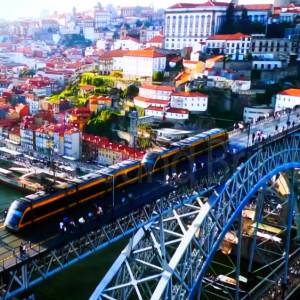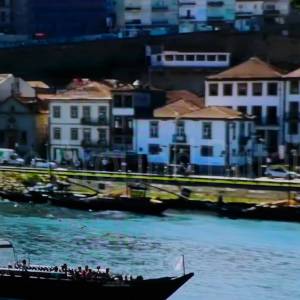Porto, Portugal
Details
Accessibility
Google AI in 2025:
"Porto's accessibility is mixed, with significant challenges due to its hilly terrain and cobblestone streets in the historic center, but with improvements in public transport and infrastructure. While some older areas are difficult for wheelchair users, the metro and many buses are accessible, and the city has implemented measures like pedestrian zones and elevators to improve mobility. Many hotels also offer accessible rooms, and locals are generally willing to help.
- Metro: The metro system is designed to be 100% accessible, with audible and visual warnings and adapted equipment.
- Buses: Many buses are accessible with lower floors, ramps, and wheelchair spaces, though capacity for wheelchairs is limited to one per bus.
- Airport transport: The #601, #602, and #604 buses run from the airport to the city center and are accessible.
- Elevators and funiculars: The city has mechanized stairs and funiculars, such as the Guindais Funicular, to help navigate steep inclines.
- Hilly terrain: The city's hilly nature can make navigating difficult, especially in the historic center.
- Sidewalks: Some older streets have narrow sidewalks that can be challenging for wheelchair users.
- Paving: While some areas have good paving, many historic streets are made of cobblestones or uneven stone, which can be difficult to traverse.
- Pedestrian zones: The city has created pedestrian-only areas in the historic center to make it easier to get around.
- Accommodation: Many hotels in Porto offer accessible rooms and features.
- Tours: Private accessible tours are available and can help navigate the city's challenges.
- Assistance: Locals are often willing to provide assistance to visitors who need help."
- + https://www.handiscover.com/en-gb/content/post/wheelchair-accessible-porto
+ https://smarttourism.cm-porto.pt/accessibility/ "Pedestrian routes have been upgraded by inserting ramps and tactile paving, removing obstacles, widening pavements and lowering crossings. Several pedestrian traffic lights have audible warning devices and countdown timers. In addition, the metro system has 100% accessible vehicles and stations with adapted equipment and lifts. Guide dogs, wheelchairs, bicycles and leisure equipment are permitted. Urban buses have low floor design and can accommodate one occupied child stroller; 66% of buses have a ramp and one wheelchair place. Trains have two Type A intermodal stations – suitable for people with mobility impairments.
Natural resources are also accessible. All beaches have been awarded the Blue flag and two of them are certified “Accessible Beaches“, with specific paths, appropriate signage, parking spaces for people with reduced mobility, an emergency station and adapted toilets. They also have an amphibious chair to provide access to the water, free of charge, throughout the bathing season.
It is also a priority to ensure the removal of barriers (physical, economic, social, and linguistic) in cultural facilities. The City Council is currently undertaking a project in partnership with Accessible Portugal, to improve accessibility to museums, churches, gardens and historical monuments. More than 50 tourist sites in the city of Porto have been identified and the accessibility features and needs. Materials such as audio guides or Braille routes will be created, along with a guide called “Porto for Everyone”, which will identify accessible tourist points of interest."
+ https://www.youtube.com/watch?v=UIDaJzUS9p0
Brief description
https://en.wikipedia.org/wiki/Porto
2025: "Porto (Portuguese pronunciation: [ˈpoɾtu] ⓘ), also known in English as Oporto,[a] is the second largest city in Portugal, after Lisbon. It is the capital of the Porto District and one of the Iberian Peninsula's major urban areas. Porto city proper, which is the entire municipality of Porto, is small compared to its metropolitan area, with an estimated population of 252,687 people in a municipal area of 41.42 km2 (16 sq mi).[1][10] As of 2025, Porto's urban area has around 1.4 million people in an area of 2,395 km2 (925 sq mi), making it the second-largest urban area in Portugal.[11][12][13][14][15] while the Porto metro area has more than 1.8 million people. It is recognized as a global city with a Gamma + rating from the Globalization and World Cities Research Network.[16]
On the Douro River estuary in northern Portugal, Porto is one of the oldest European centers, and its core was named a World Heritage Site by UNESCO in 1996, as the Historic Centre of Porto, Luiz I Bridge and Monastery of Serra do Pilar. The historic area is also a National Monument of Portugal.[17] The western part of its urban area extends to the coastline of the Atlantic Ocean. Settlement dates back to the 2nd century BC, when it was an outpost of the Roman Republic. Its combined Celtic-Latin name, Portus Cale,[18] has been referred to as the origin of the name Portugal, based on transliteration and oral evolution from Latin.
Port wine, one of Portugal's most famous exports, is named after Porto, as the metropolitan area, and in particular the cellars of Vila Nova de Gaia, were responsible for the packaging, transport, and export of fortified wine.[19][20] Porto is on the Portuguese Way path of the Camino de Santiago. In 2014 and 2017, Porto was elected The Best European Destination by the Best European Destinations Agency.[21] In 2023, Porto was named City of the Year by Food and Travel magazine.[22] In 2024, the city was named World's Leading Seaside Metropolitan Destination at the World Travel Awards.[23] "
Address
Luís I Bridge
Porto
Portugal
+ Turismo do Porto e Norte de Portugal,
Castelo Santiago da Barra
4900-360 Viana do Castelo
Phone
+351 258 820 270
Website
http://www.portoenorte.pt/pt/o-que-fazer/
http://www.portoenorte.pt/pt/contactos/informacao/sede/
Directions
GPS: 41.689773, -8.838155
Opening Times
Always check with the venue directly for up-to-date information including opening times and admission charges as they may be subject to change
Transport
https://en.wikipedia.org/wiki/Porto#Transport
Amenities
https://portolover.com/sightseeing-attractions.html?
https://destinationlesstravel.com/10-best-things-to-do-in-porto-portugal/?
https://www.tripadvisor.co.uk/Attractions-g189180-Activities-Porto_Porto_District_Northern_Portugal.html in 2025
Google AI in 2025:
"In Porto, you can explore the historic center, including the Porto Cathedral and the São Bento Train Station. Other popular activities include climbing the Clérigos Tower, visiting the Palácio da Bolsa (Stock Exchange Palace), and taking a Douro River cruise. To experience local culture, sample Port wine in Vila Nova de Gaia, see the famous Livraria Lello bookstore, and enjoy the views from the Dom Luís I Bridge."



